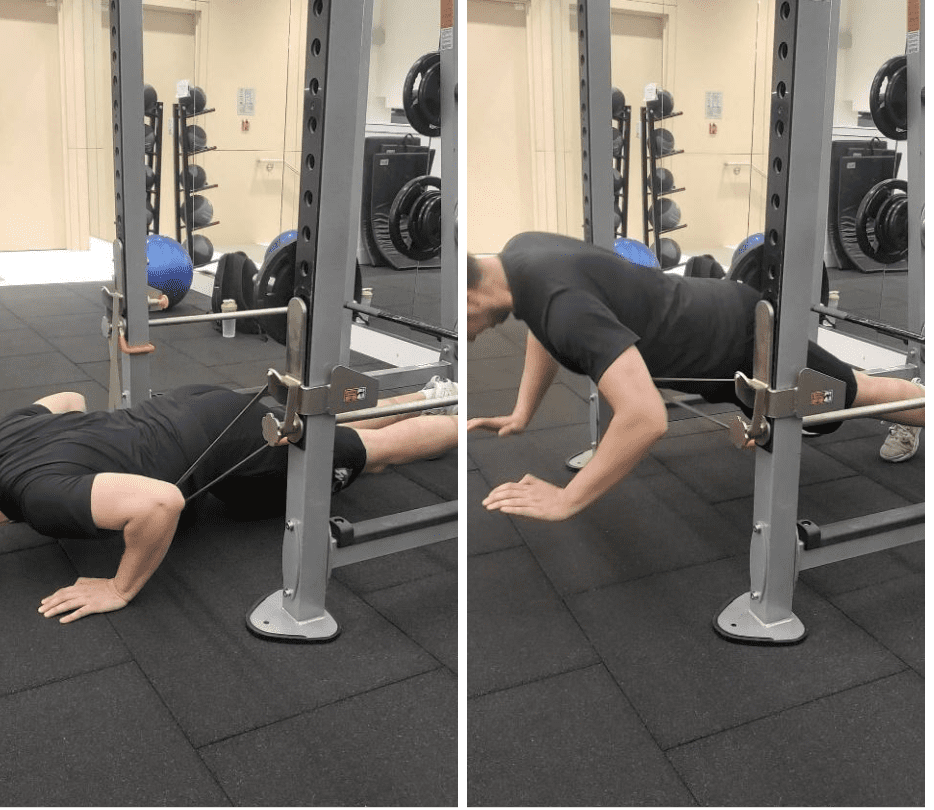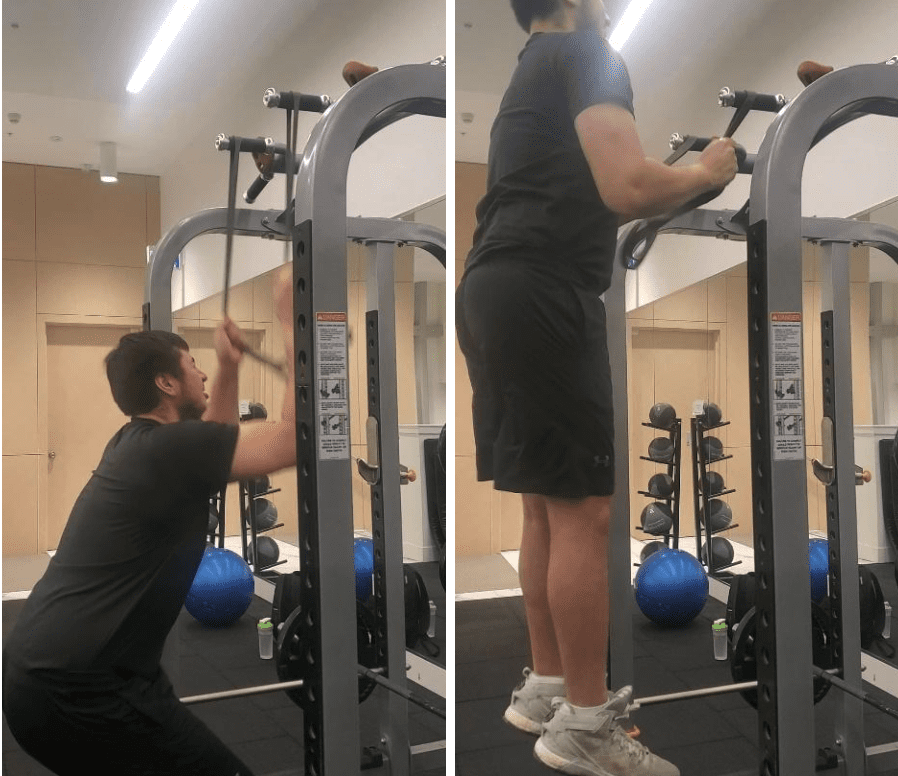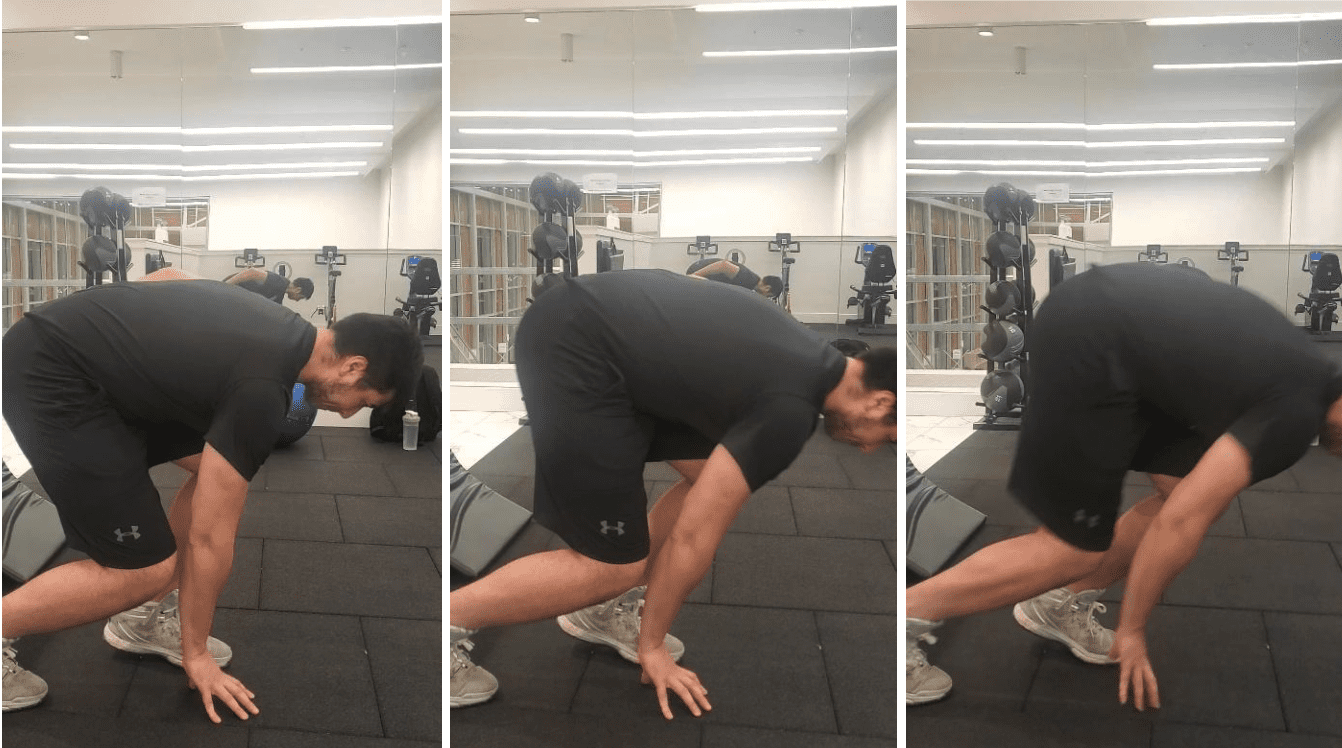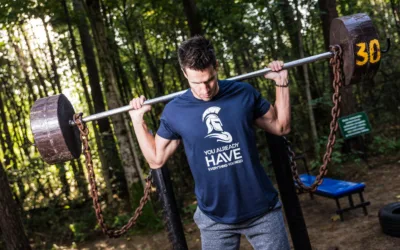Overspeed Training: Get Faster & More Explosive

What is overspeed training, and why should you do it? If you want to be a faster, stronger, and more efficient athlete, consider using these overspeed exercises and techniques in your next strength workout.
Brandon Humphrey is a kinesiologist and personal trainer based in Burnaby, British Columbia. His company, Kin With Conscience, provides mobile and online personal training, kinesiology, and strength and conditioning services to individuals of all abilities. In this article, he shares his expertise in overspeed training, as he has done with many of his high-level athletes.


Some Athletes Focus on the Wrong Things
Let’s be blunt about this — too many novice athletes are misguided in the weight room. Most new gym-goers are first exposed to bodybuilding or physique-centric narratives when it comes to training. It’s the first thing they see when exploring fitness pages on social media, the first thing that pops up in Google searches, and the first thing they encounter when they step into a gym. Massive arms. Toned glutes. Shred. Cut. Bulk. Sculpt… you get the gist.
I don’t intend to slander bodybuilding, it’s a sport that is beyond me. The dedication I’ve seen from friends and colleagues competing is mind-blowing to someone like me (who enjoys lifting but also equally enjoys pizza and ice cream far too much to endure an intense calorie-restricted cut phase). I’ll personally continue to be too fluffy for bodybuilding and leave that area of coaching to those who know it best.
However, it’s important to recognize that bodybuilding and aesthetic training are heavily linked to the public’s perceptions of fitness, so they’ll continue to influence anyone just getting into training. In the case of athletes (and those just curious about exercise), bodybuilding programs are often their first exposure to weightlifting and it tends to set the foundation for their ideas of future training.
I think we’re missing the mark if the dominant narrative for any new lifter is “just follow this online bodybuilding program.”
Not everyone should be training for aesthetics and this is especially true for sports performance athletes.
When it comes to sports performance, physique both matters and doesn’t matter at the same time. Performance and physique are not equal. For example, we can quantify physical performance through testing such as improvements in the vertical jump, 40yd dash, bench press, squat, etc.
Physique is more about appearance: height, weight, musculature, body fat percentage, and the “eye” test for an athlete looking the part in their sport. All of these things may or may not actually have an effect on performance. In other words, physical performance is what we can do while physique is how we look.
What is Overspeed Training?
Now that we’ve established the prevalence of common fitness industry ideas around training and aesthetics, it’s time we get to the fun part: getting faster and improving performance by using overspeed training.
Overspeed training is an intermediate-to-advanced training technique used to promote speed and power in athletes.
It utilizes lighter loads and/or neural training techniques that allow athletes to move at higher speeds than under normal conditions. For our human physiology readers, consider the (theoretical) concept of post-activation potentiation, where we use a neural training stimulus that allows the body to go faster than previously able, then remove the assistance with hopes that the body adapts and retains some of this performance boost.
Overspeed training is never the first thing I do when working with an athlete to make them faster, but it is something I hold as a trick to keep training fresh and induce adaptation in well-trained individuals.
Younger athletes in awkward growing phases aren’t usually a good fit for overspeed training, as their coordination is still developing and they usually need to build a strength base first. For speed work, young athletes are usually just fine sticking with accelerations, sprints, and a variety of jumps and throws. Overspeed training is usually better suited to somewhat physically developed and coordinated athletes with decent training experience.
Build Strength Before Speed
To move with speed, you must produce force quickly (power). This means being very strong for a short period of time and producing an explosive muscle contraction. You need a solid strength base to do this. If you can’t produce force effectively, you can’t produce force quickly.
Having said that, I see many athletes who are good at getting stronger but forget about the application of strength training toward a performance goal. This unfortunately results in not making any relevant physical adaptations to enhance performance.
Below I’ll explain how to put your work in the weight room to good use with several overspeed training techniques.
You Work too Hard to Not See Progress
Find Your Perfect Training Plan
Options for Every Goal
Training plans from real coaches covering any goal, fitness level, and number of sessions per week.
The Best Coaches
Get coached by the best. Olympians, ex-NFL stars, Titan Games Winners, Sport Scientists and more.
Starting at $1/ day
With many options including a free 7 day trial, you can try out programming before you commit.
Standard Speed Training vs. Overspeed Training
Standard speed training might include lifting at high velocity, such as barbell squat jumps at 30% 1RM (repetition maximum or rep max). Bodyweight squat jumps, approach jumps, broad jumps, plyo push ups, lower body plyometrics, and sprints are all perfectly valid training methods in any athlete’s program when used effectively.
Overspeed training is the special sauce for high-performing athletes and anyone looking for the biggest of bounce and the springiest of steps.
These are tools that tend to be intermediate-to-advanced, but all are exercises I believe any athlete looking to get faster should use at some point.
Speed training as a whole helps you understand your weightlifting efforts full circle. It’s the piece that often gets missed in a sea of online content about strength, size, and hypertrophy, where athletes ultimately train for on-field performance but don’t always connect the dots.
Overspeed Training Exercises
Banded Plyo Push Ups
Banded plyo push ups are a very simple form of overspeed training that use a quick contraction through a reduced load in the concentric (up) phase. The band adds elastic energy and reduces weight at the bottom of the push up, allowing for a more powerful, explosive push out.
How to do it: This exercise can be set up with a resistance band pulled across a squat rack. You can adjust the height of the J-hooks or change the band tension to heavy or light.
Benefits: The advantage of doing a speed-focused push up variation is that you receive better kinesthetic feedback by explosively propelling your body rather than using an external object. You also need to cushion your landing, which puts stress on the shoulder joint in a way that is adaptive to the forces you face in your sport, especially any close-contact/combat sports.


When it comes to sports, the banded plyo push-up translates best to push-dominant movements like American football, particularly among blockers. Offensive linemen must be able to explosively push the opposition. From a strength and conditioning perspective, they use a mix of near-maximal isometric contractions/extended high-intensity pushes (like on longer plays when they’re locked in contact with the opposition and continue to push) as well as short, choppy, aggressive shoves (like when they’re creating a block in open field).
Depending on their position, other players may need to produce quick and aggressive shoves when running the ball and pushing off a defensive tackle (think of a stiff arm). Banded plyo push-ups are a great option for the latter scenario, whereby the quick, ballistic movement and necessary shoulder stability mimic the gameplay demands on the athlete.
Band-Assisted Vertical Jumps
I think band-assisted vertical jumps are the most practical and effective overspeed training exercise there is. I love them as a form of contrast training with quick and explosive contraction.
How to do it: Fasten your resistance band of choice to the top of a squat rack or chin-up bar. You need overhead clearance, so be smart with where you choose to do this one. It’s better to start with a light band rather than too heavy, otherwise the height you reach can be dangerous!
Pull the band tight with tension while lowering your hips into the bottom of the squat jump, then explode powerfully, keeping tension on the band by continuing to pull with your arms. The idea is to experience less resistance and slingshot on your jumps, often adding close to a foot of vertical.
Benefits: This is a great exercise if you’re a less-twitchy jumper, as it allows you to feel the speed your jump should generate. The reduced resistance created by the band also helps you work on your springiness through a higher velocity contraction that’s faster than what you’d normally be able to generate under regular bodyweight conditions.


I recommend aiming for about one foot of increased vertical jump when using band assistance.
Level Up Your Training
With TrainHeroic’s immersive training app
TrainHeroic does everything you wish your old gym notebook could do.
Take the guesswork out of training with built-in exercise instruction and basic training programs. Compete against yourself and others. Track your performance and readiness. Smash your goals.


Falling Accelerations
Falling accelerations provide a neural training stimulus that encourages faster turnover of the legs during acceleration. The theoretical concept here is that we are tapping into primal instincts around the feeling of falling and we must speed up our legs to catch ourselves.
How to do it: Start in a crouched position and lean your weight forward. Notice in the photos that as I progress, I shift my weight forward so that more weight is on the ball of my front foot, my head is forward and in front of my body and my hips are above my head.
I encourage you to tuck in your chin more than I did. This promotes tipping forward more. A cue for this is to think about looking back between your legs. Your head drops more, and you feel more top-heavy, which exaggerates the falling-forward momentum.
Benefits: This exercise might feel uncomfortable, like you’re falling forward and stumbling out of the start. I think there’s a lot of value in providing an uncommon training stimulus occasionally. Ideally, you’ll feel the sensation of faster turnover in this drill, then apply that to feeling the same turnover in your sprints.


Downhill Runs
You’ve probably done or seen uphill runs. While running uphill promotes acceleration mechanics over short distances (or as grueling conditioning over longer distances), the human performance nerd in me loves the application of using a slight downslope to assist acceleration.
How to do it: Use a very gentle downslope, around ten degrees or so. (Think of something comparable to a gentle slope on most residential driveways.) I don’t recommend any large distances for multiple reasons. First, it can be hard to find a consistent and subtle gradient long enough. Second, grass can be slippery, and concrete is a hard surface to wipe out on. If you’ve ever run downhill before, you may know that feeling of “I’m going too fast and I’m going to wipe out!” That’s not the sensation we’re going after.
Benefits: Much like the falling acceleration, downhill runs encourage faster leg turnover with slightly less resistance. Consider how 100m sprint times don’t count as world records if there is too strong a tailwind. Less resistance gives you an advantage. Your strides are slightly longer and carry more distance when running down a slight vertical drop.
Want Training Tips, Exercise Guides & Knowledge Bombs Sent to Your Inbox?
Sign up for the FitNerd newsletter from TrainHeroic
Related articles
Slow Reps vs. Fast Reps
You’ve probably noticed that some people in the gym tend to perform their reps as fast as possible, whereas others take a slow and controlled approach. But which is better? Dr. Andy Galpin is a Professor of Kinesiology at the Center for Sport Performance at California...
How to Do Leg Extensions Without a Machine
Short shorts are the new stinger tanks. Rocking those big tree trunks with canyon deep cuts is so hot. Leg extensions are a bodybuilding staple—they isolate your quads, the front-facing muscle group of your thighs, by flexing (bending) and extending (straightening)...
Tried-and-True Methods to Fix Plantar Fasciitis
What is Plantar Fasciitis? If you’re new to running or returning to it after a break, you might have been blighted by plantar fasciitis, a fancy name for an annoyingly common foot problem. It’s when the band of tissue that connects your heel to your toes (the plantar...


Join the community
Sign up for the latest training news and updates from TrainHeroic


About TrainHeroic
Support
Made with love, sweat, protein isolate and hard work in Denver, CO
© 2022 TrainHeroic, Inc. All rights reserved.






